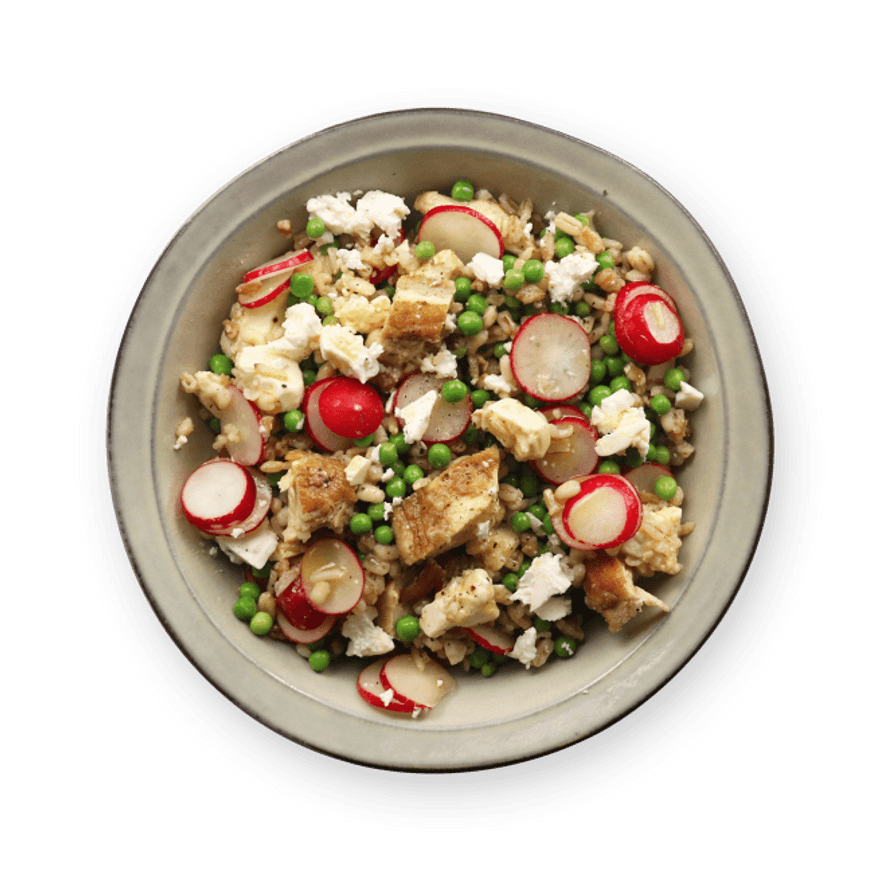Ingredients
Make sure you have...
Utensils
Stovetop, Frying pan, Pot (small)
recipe

Step 1
Cook the grains in a pot of boiling water according to the instructions on the package. (around 10 minutes)

Step 2
In the meantime, boil another pot of water and cook the peas for 8-10 minutes.

Step 3
Prepare the chicken. Tip: To get a golden finish, coat the chicken in flour before cooking.
Step 4
Heat a drizzle of olive oil or butter in a pan on high heat. Cook the chicken for 2 minutes on one side and season with salt & pepper.
Step 5
Reduce heat to medium, flip the chicken and season with salt & pepper. Cook for 8 minutes.

Step 6
Wash the radishes and cut into slices.
Step 7
When the chicken is done cooking, remove it from the heat and let it cool slightly on a plate before slicing.

Step 8
Drain the peas.
Step 9
Drain the grains.


Step 10
In a bowl, add the grains, peas, sliced radishes and crumbled feta. Add the vinegar, olive oil, salt & pepper, and mix.
Step 11
Add the chicken and mix. Serve and enjoy!
Personal notes
Add your own flavor!
Nutrition facts
Average estimated amount for one serving
| Energy | 502 cal. |
| Fat | 8 g |
| Carbohydrates | 50 g |
| Protein | 50 g |
| Fiber | 11 g |
Values are based on an average estimate for one serving. All nutrition information presented on Jow is intended for informational purposes only. If you have any concerns or questions about your health, please consult with a health-care professional.
On average, one serving of the recipe "Springtime salad with chicken" contains 502 Energy, 8 g of Fat, 50 g of Carbohydrates, 50 g of Protein, 11 g of Fiber.
Price per portion
| € | Nos recettes à -2 € par portion |
| €€ | Nos recettes entre 2 € et 4 € par portion |
| €€€ | Nos recettes à +4 € par portion |
Please note, the price above is dependent on your grocer and the available products in the grocery store you chose.
Scores


A Nutri-score
The Nutri-score is an indicator intended for understanding nutritional information. Recipes or products are classified from A to E according to their food composition to promote (fiber, proteins, fruits, vegetables, legumes, etc.) and foods to limit (energy, saturated fatty acids, sugars, salt, etc.).
B Green-score
The Green-score is an indicator representing the environmental impact of food products. The recipes or products are classified from A+ to F. It takes into account several factors on the pollution of air, water, oceans, soil, as well as the impacts on the biosphere. These impacts are studied throughout the product life cycle.
Retrieving reviews...



